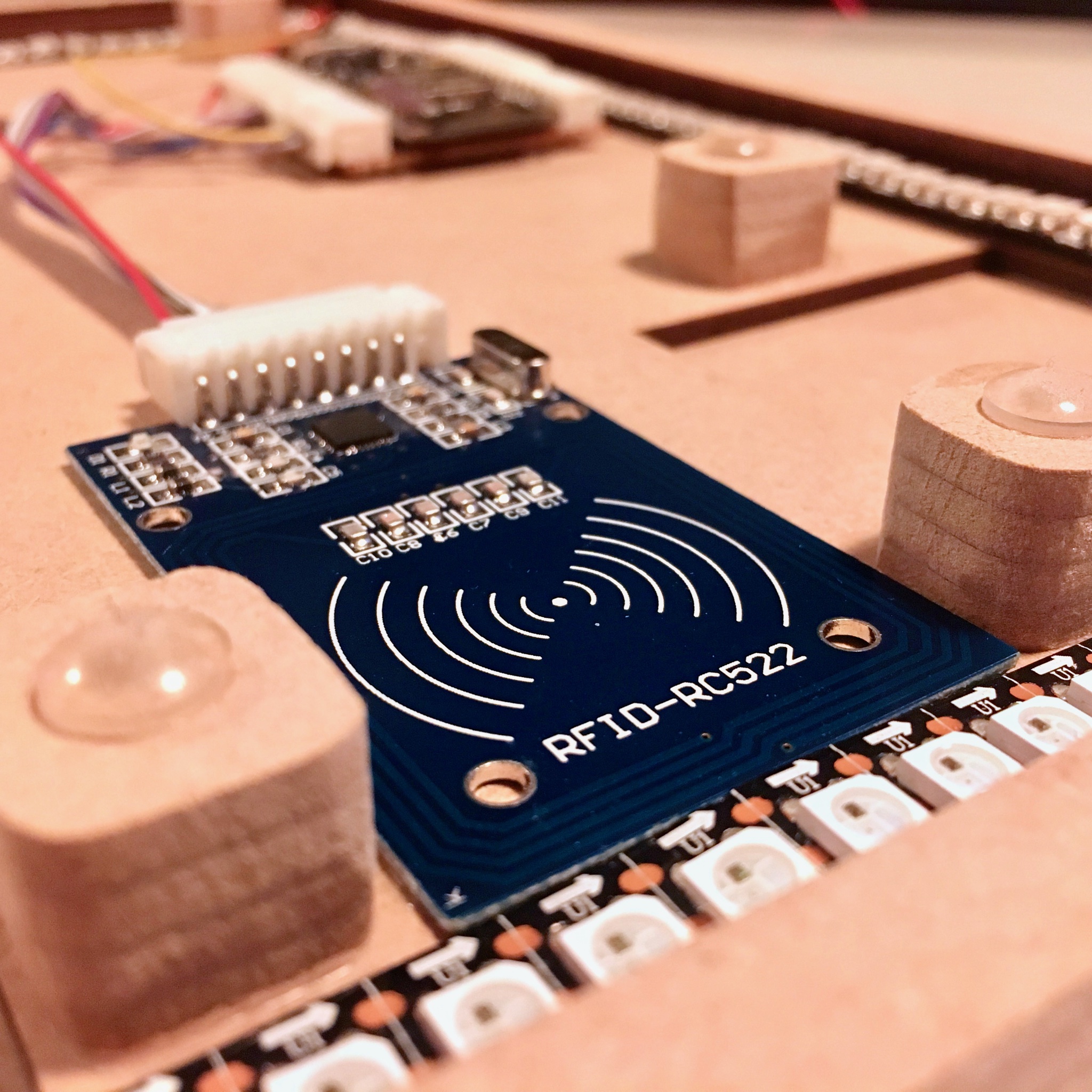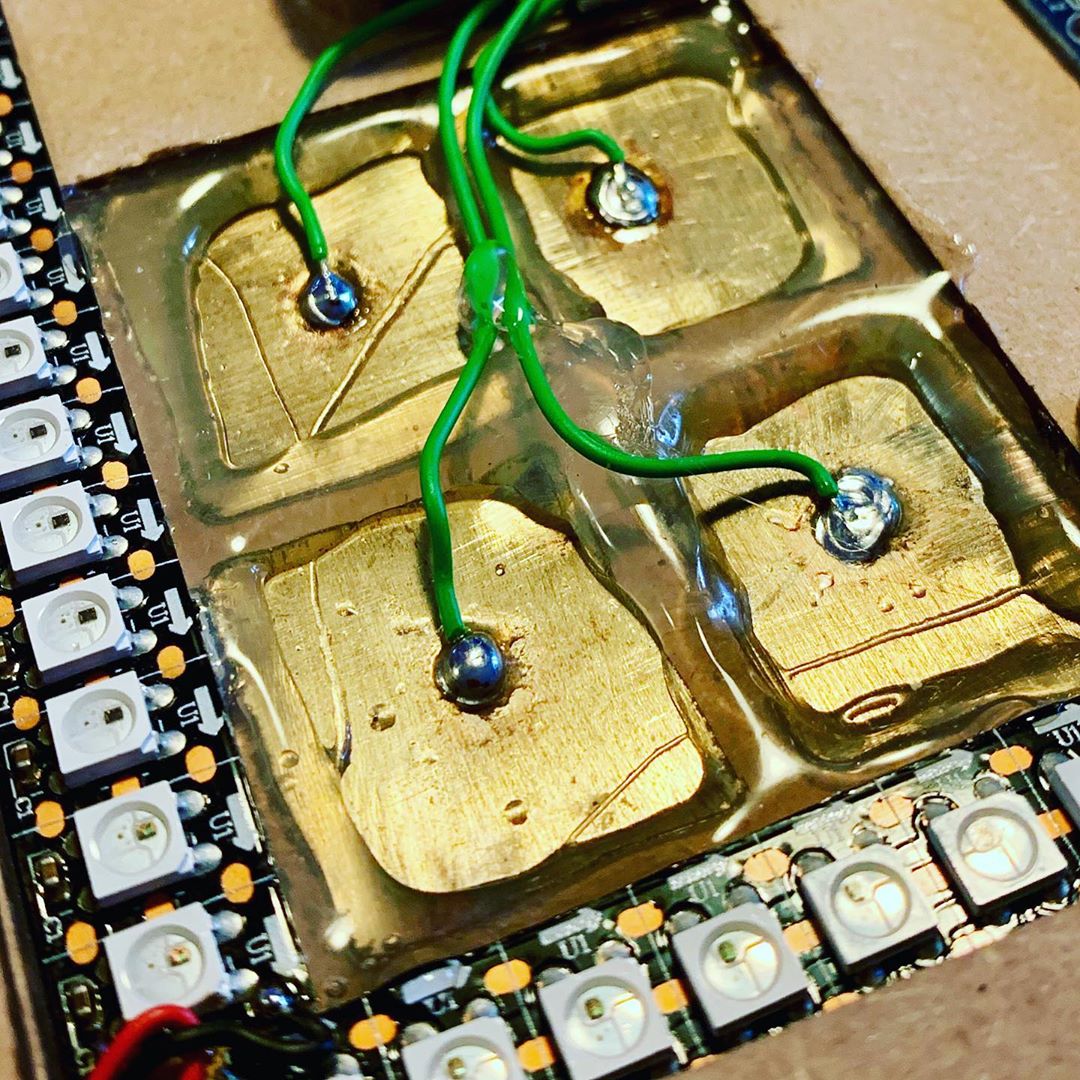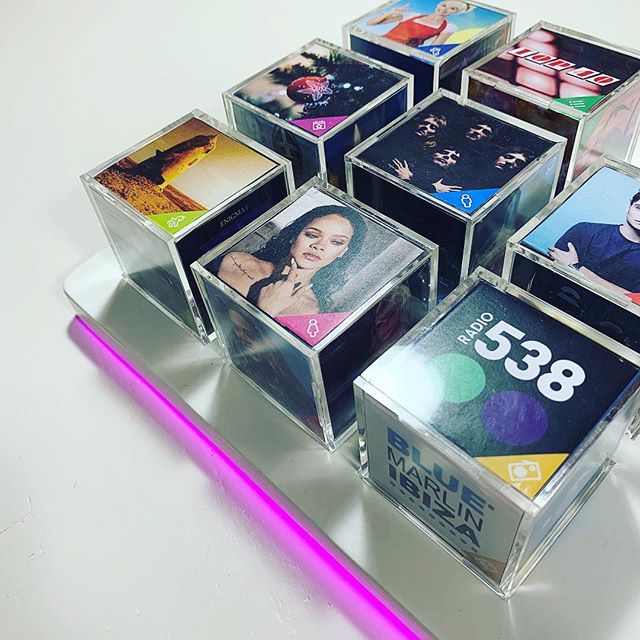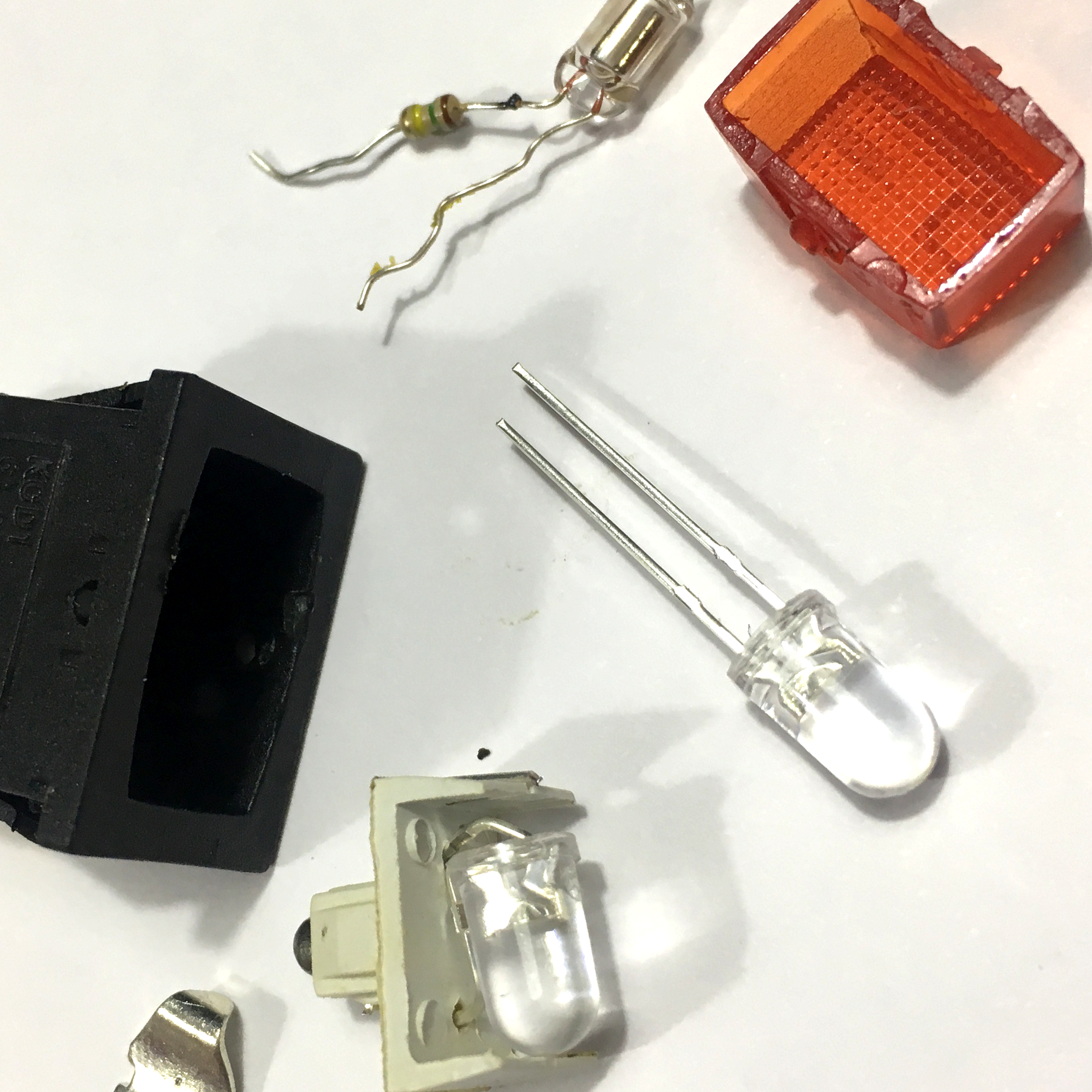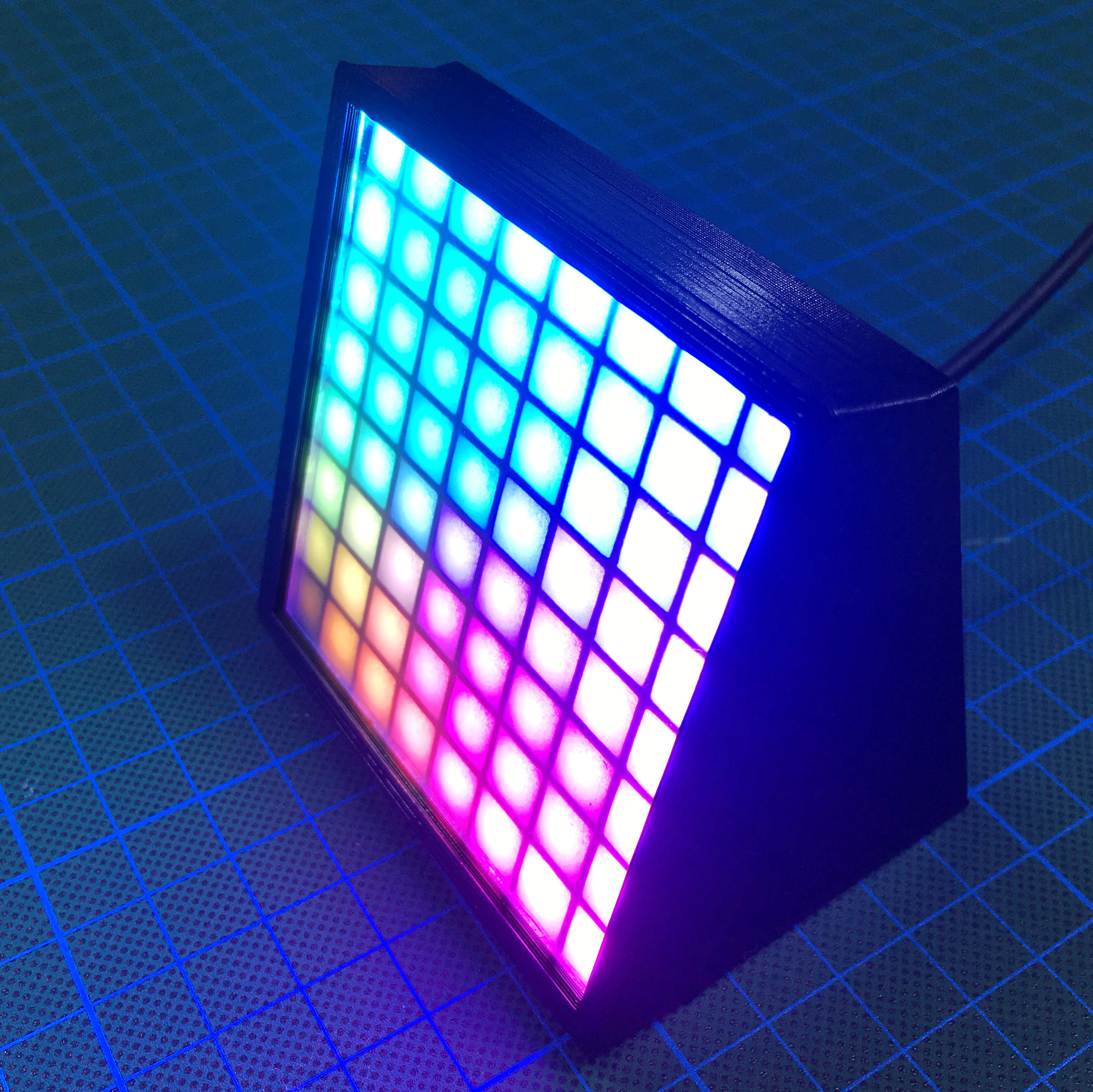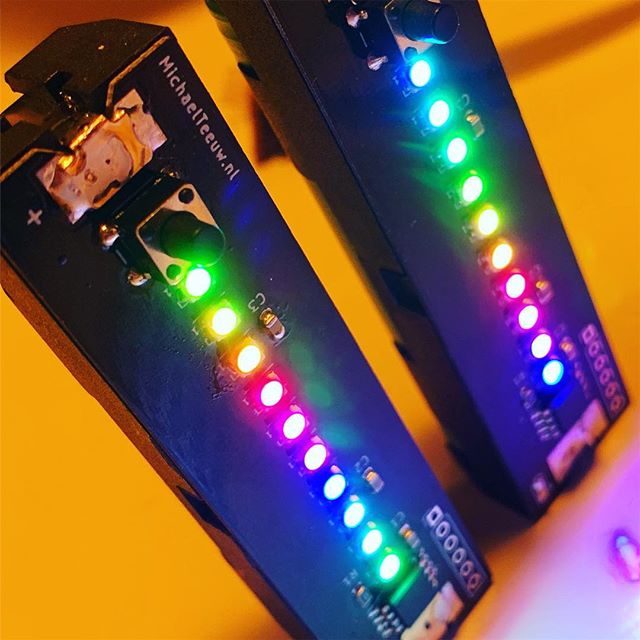After last week’s proof of concept it is time to assemble the MusiCubes tray. Just slap on some wood glue and you’re ready to go! What could go wrong, right?
MusiCubes: Concept & Prototyping
I ended last week’s blog post with showing off the laser cut layers that make up the MusiCubes tray. These were ordered online and to keep things withing budget, I didn’t order any spares.
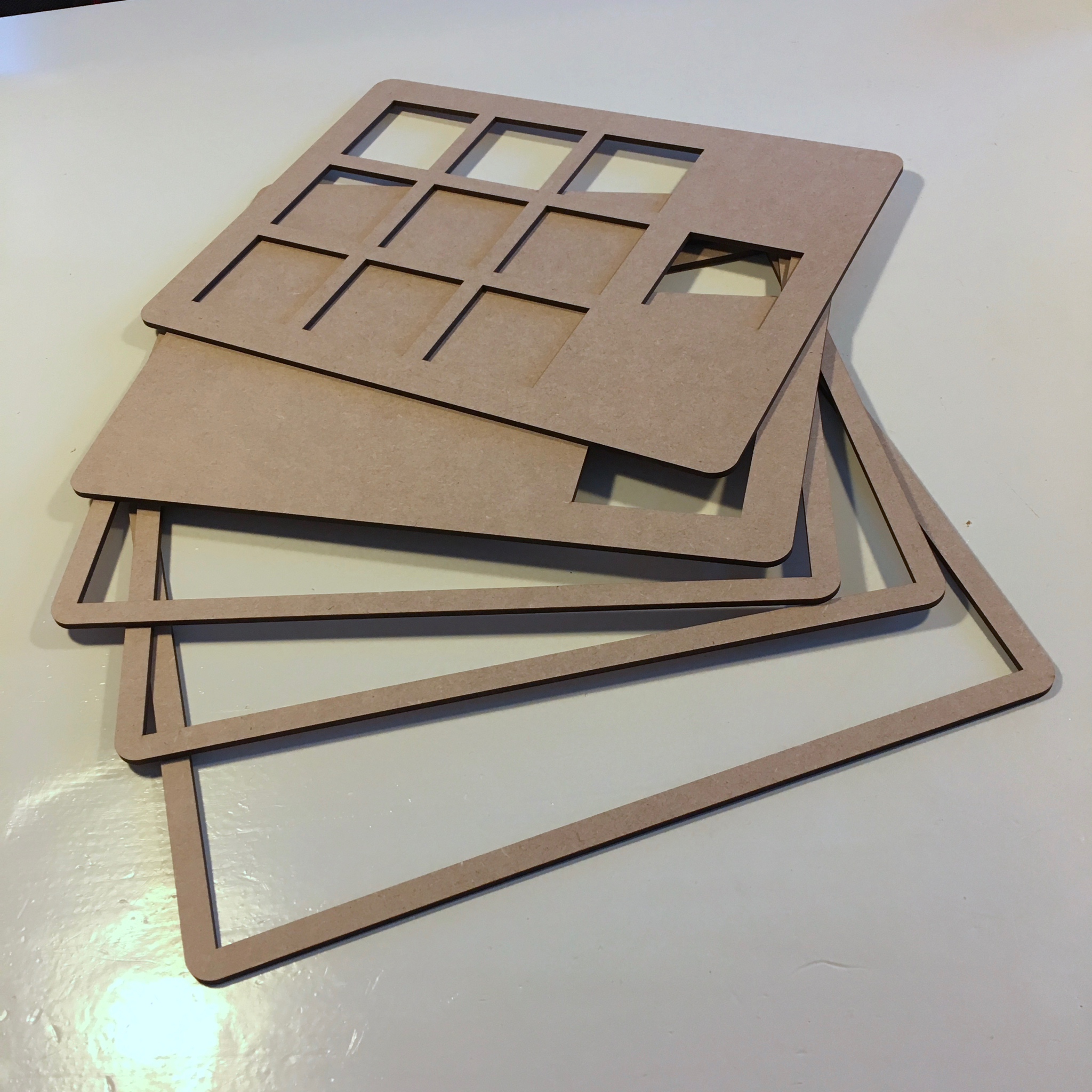
And although I promised myself that I would carefully glue together these layer, my enthusiasm and curiosity got the best of me … Just a few minutes after I opened the package of Snijlab.nl I started squirting wood glue like there was no tomorrow.
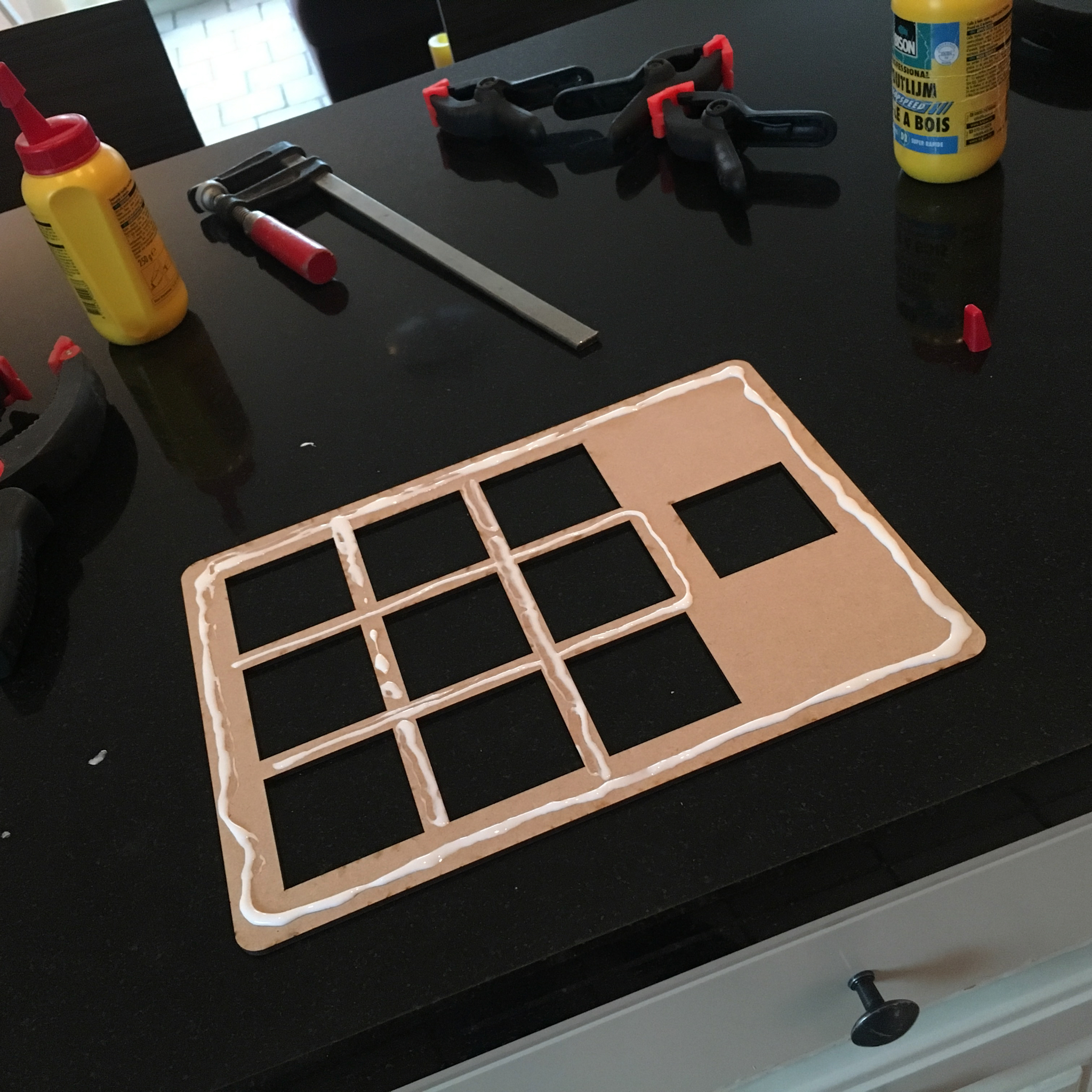
Of course these layers should be glued together two at a time, and pressed together on a flat surface while drying to prevent warping.

Of course, I got impatient and decided to glue all the layers at once.
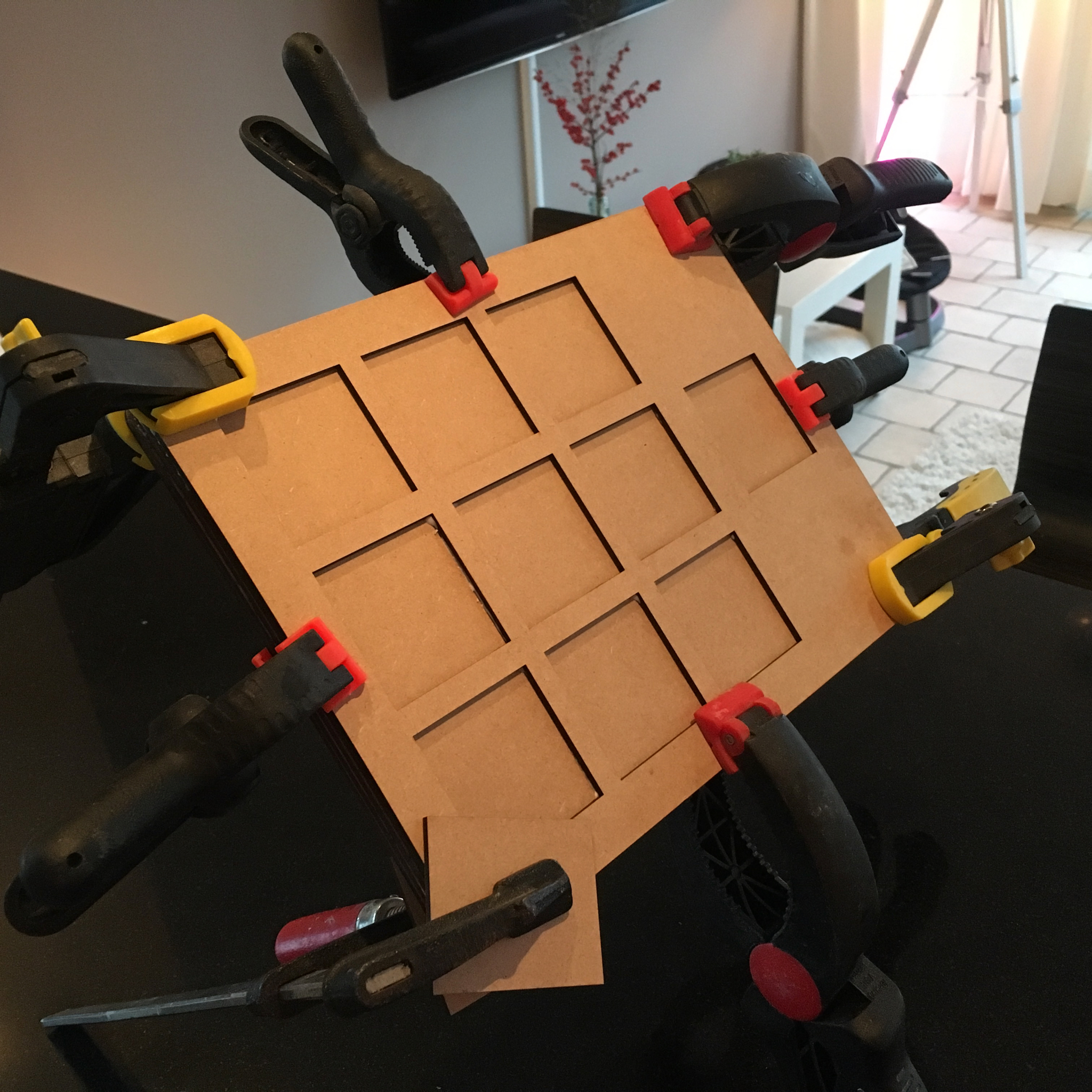
More than enough clamps to keep everything the way I wanted … right? Wrong! After drying, the tray was completely warped and the layers were terribly misaligned. I was so frustrated that I forgot to take a picture of the result.
Luckily my dad has more experience with woodworking (as well as with making embarrassing mistakes), so with some of his tips and suggestions, I could try to fix it.
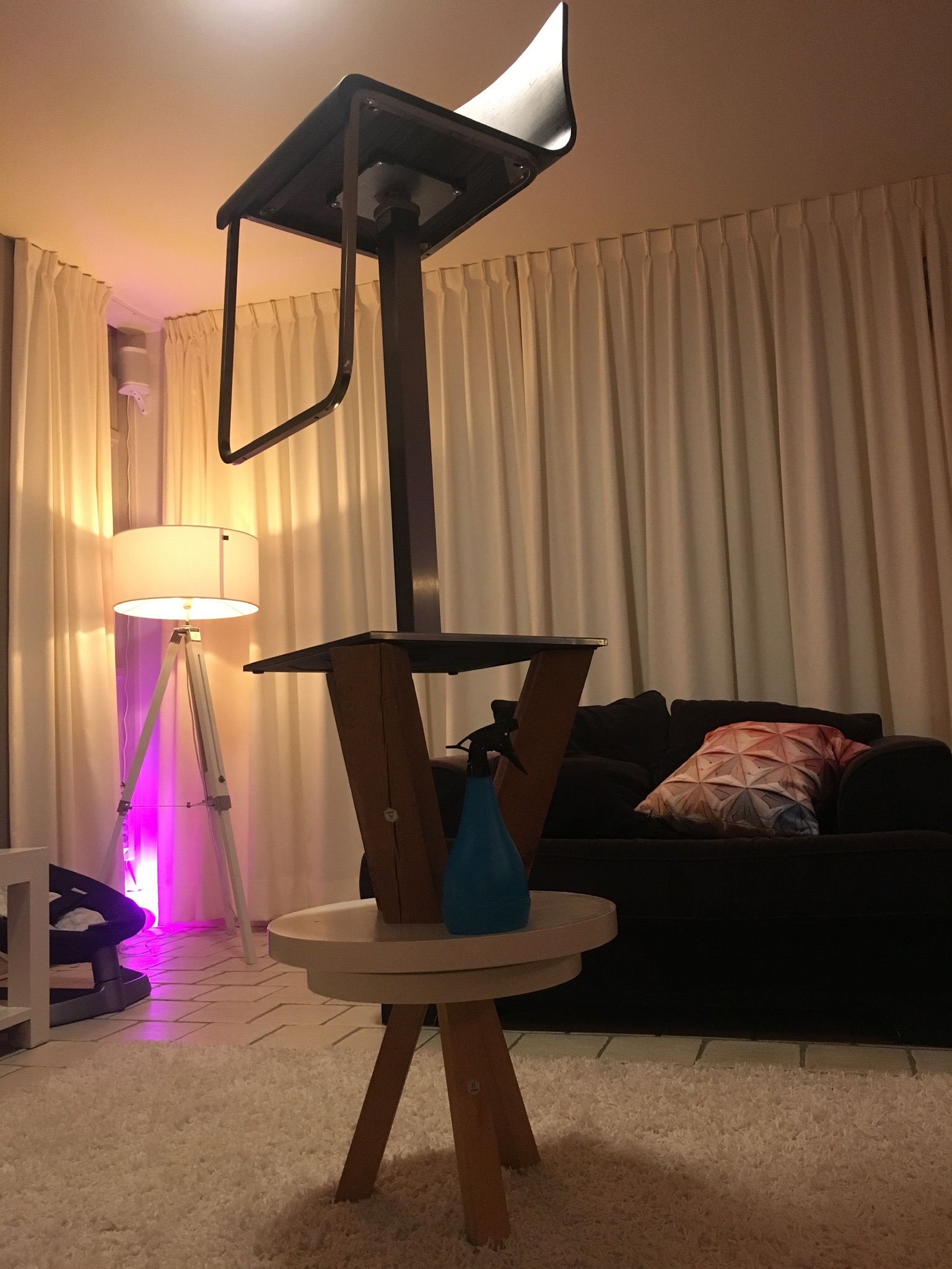
First I sprayed the tray with hot water giving it a good soak. Next, I put it between two completely flat side tables and added a heavy barstool as additional weight. I left it like this over night, so the MDF layers could dry.
The next morning I had two successes:
- The tray recovered almost perfectly. It’s still a tiny bit warped, but my guess is that nobody will notice it as long as you don’t tell anybody.
- And more important: my wife didn’t ask any questions on why I built an unstable tower of doom in our living room just before we went to bed. I’m finally convinced I married the right person.
The left over misaligned layers could be easily fixed by my disc sander.
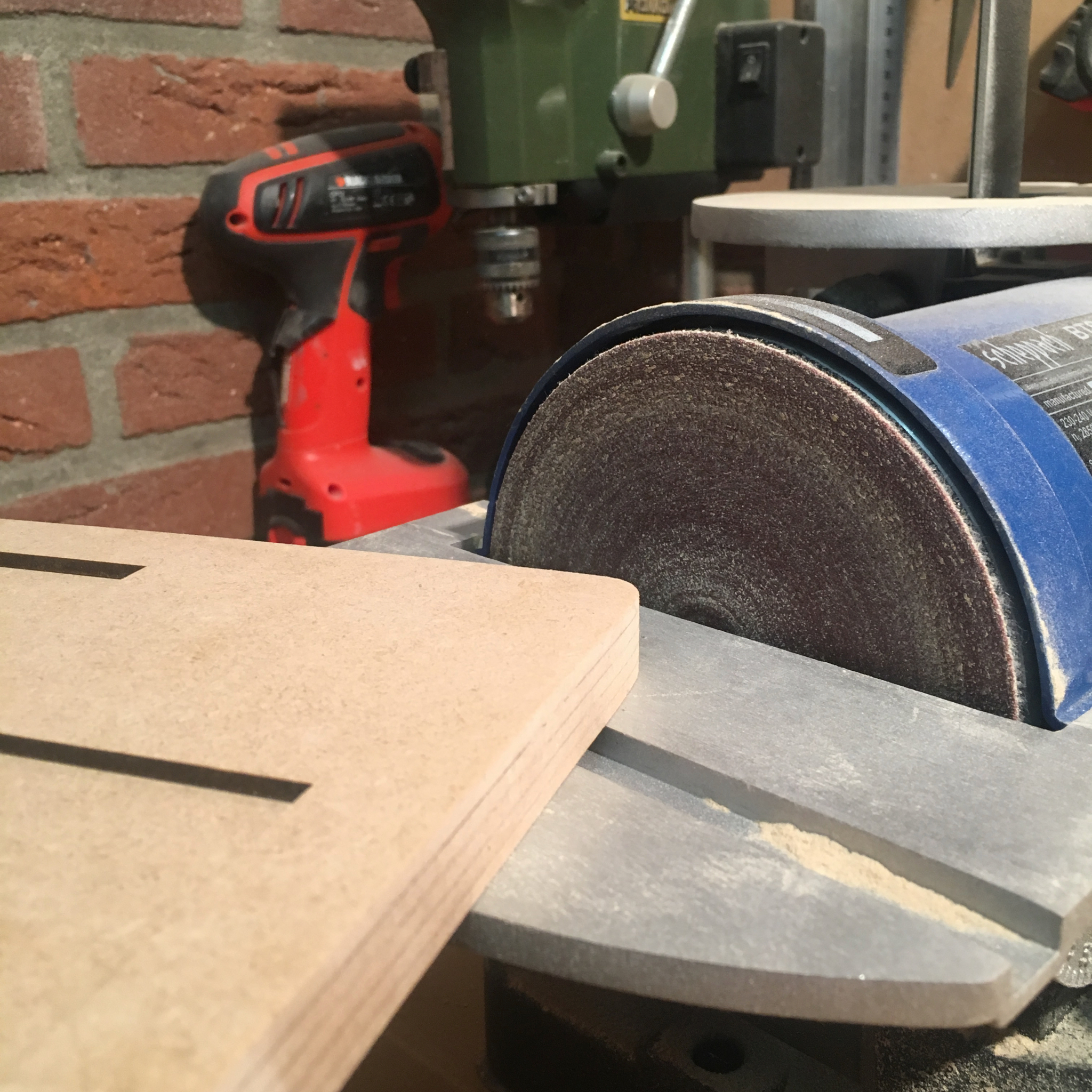
Not only did the disc sander smooth out any misalignment, it also removed the burn marks caused by the laser cutter, making the spray paint in the future a bit easier.
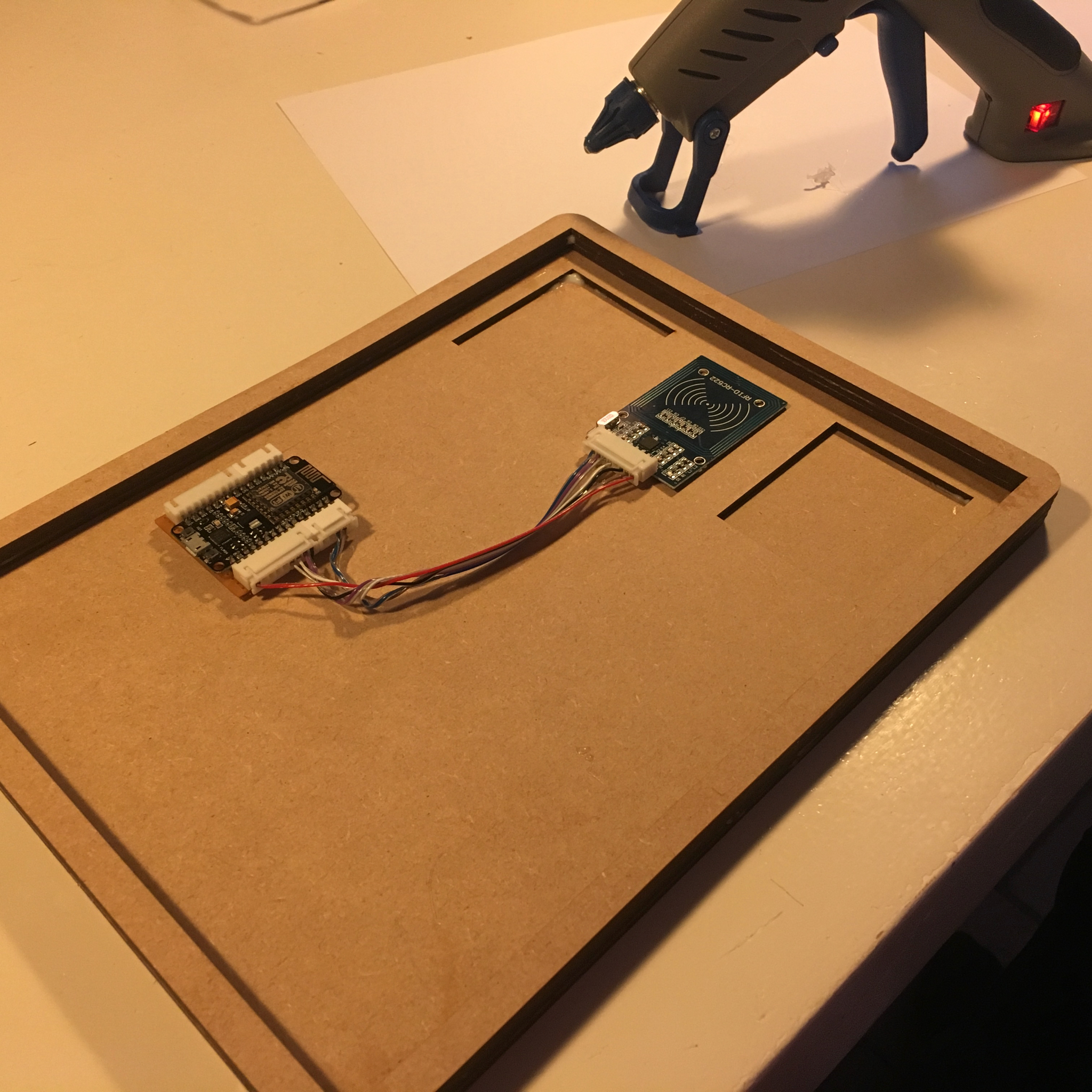
Next I mounted the RFID reader and the ESP8266 microcontroller with the help of my hot glue gun.
Now we reached an important step in the process: I handed the MusicCubes over to Quality Assurance for a thorough inspection.
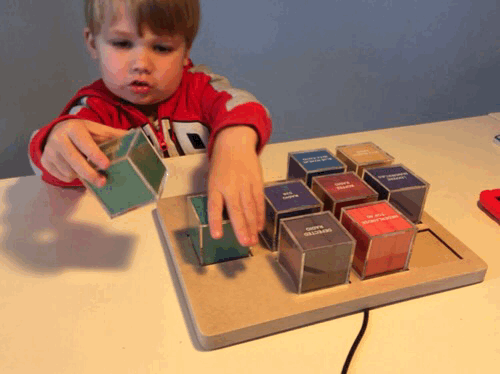
After confirming the RFID reader worked, I added four strips of WS2812 LEDs also known as Neopixels. To make sure I could see the light from below the tray, I also added some standoffs on the bottom of the tray.
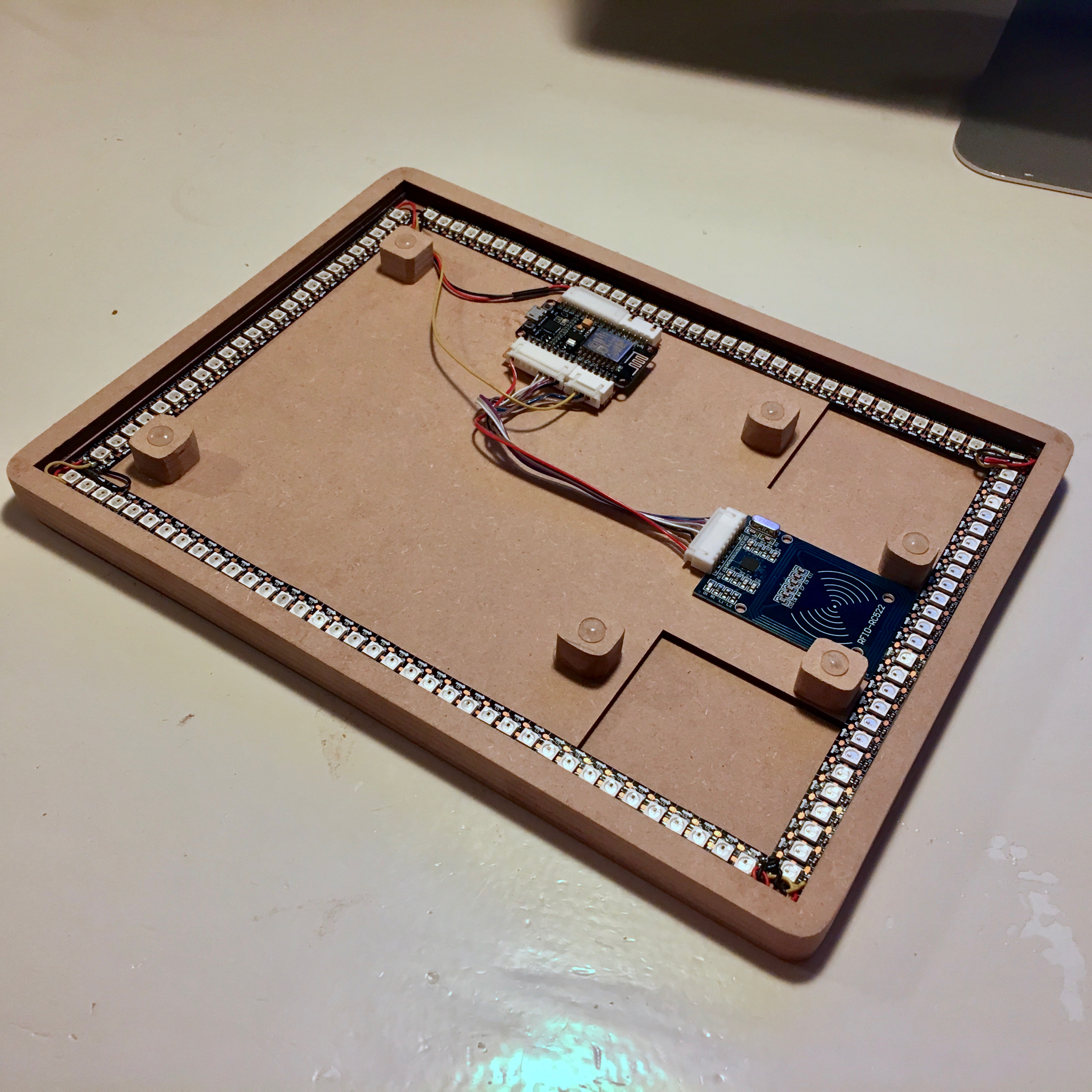
And after soldering the four strips together with a few wires, and hooking it up to the ESP8266, it was time to give it a test.
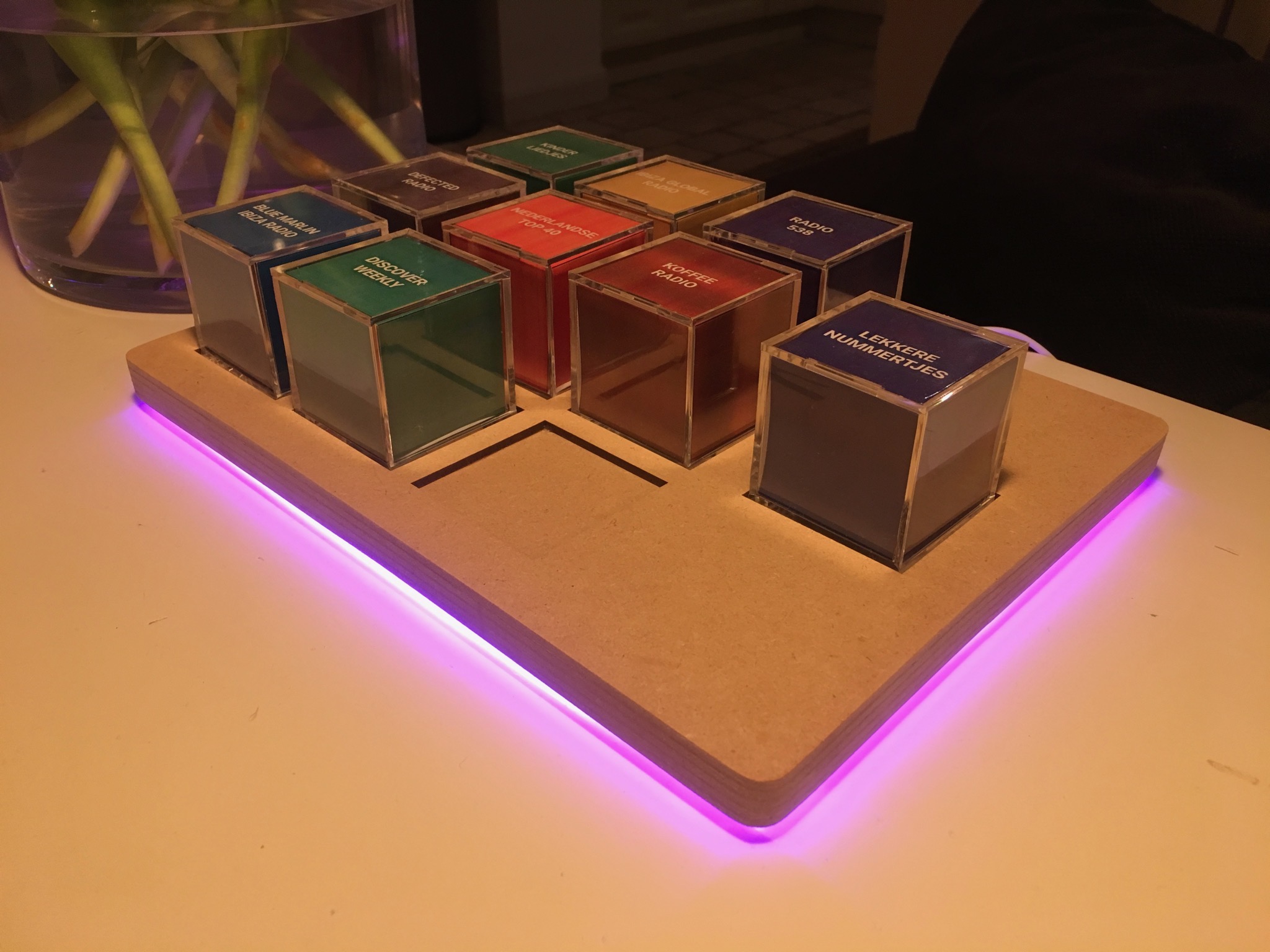
This certainly looks promising! I do need to add a big capacitor to prevent power issues when the LEDs turn on. But other than that, they look beautiful!
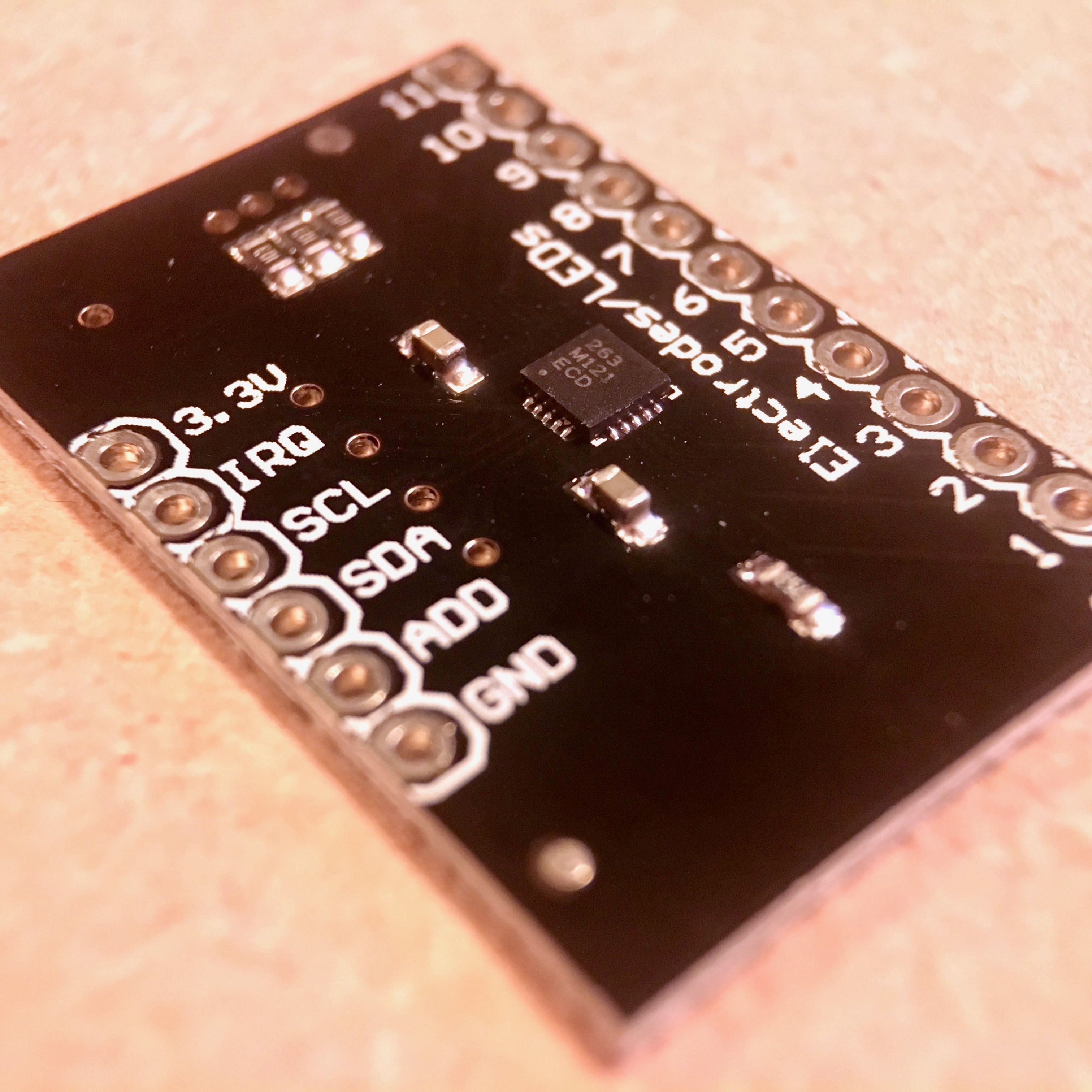
Just before I wanted to write this update, I received the MPR121 breakout boards which will help me with the proximity capacitive touch sensors to control the volume of the music.
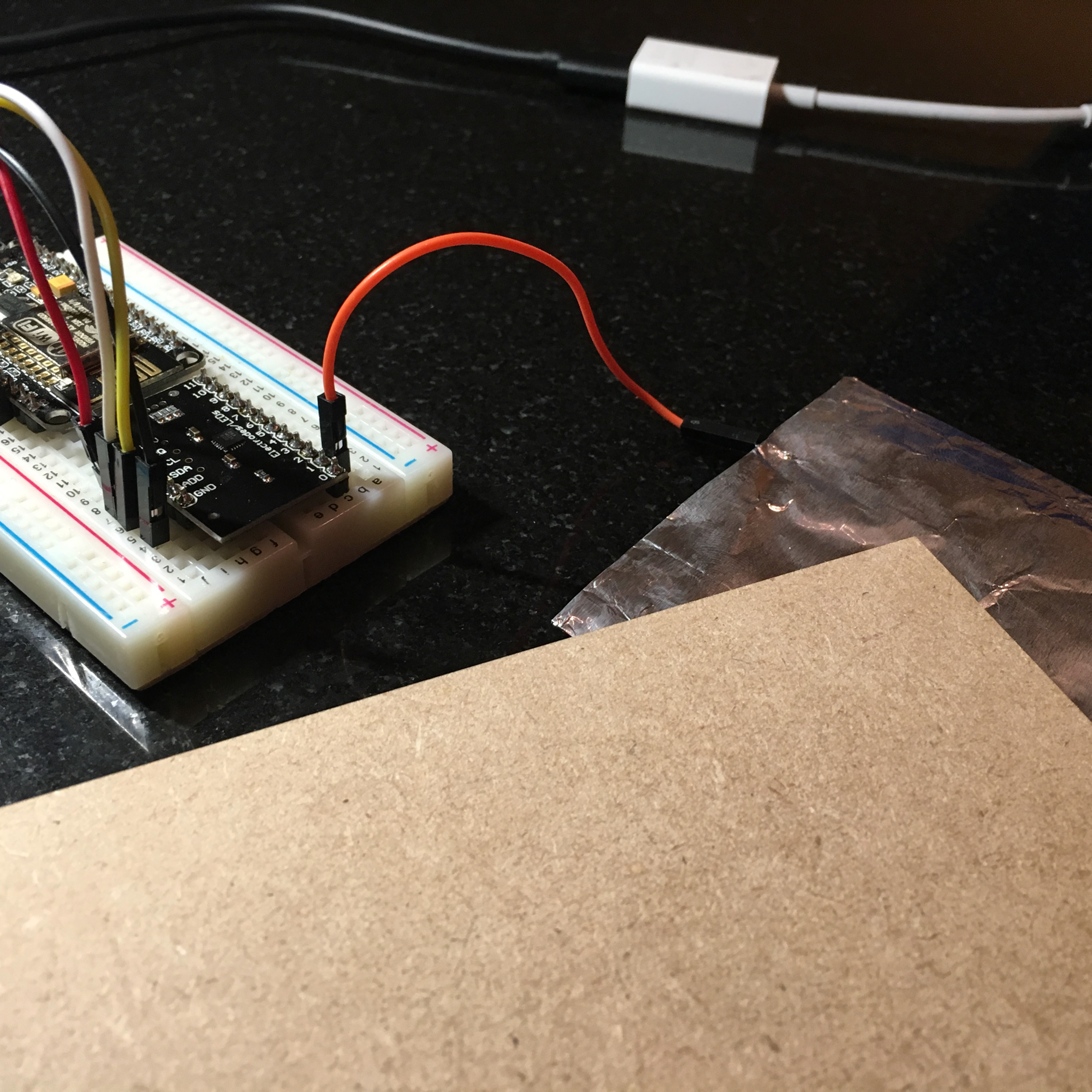
I didn’t have time yet to incorporate it into the MusiCubes tray, but a quick test on a bread board does look promising. With a piece of aluminum foil as the sensor, the MPR121 is able to sense the touches trough the 3mm thick MDF.
Let’s work on that part of the project in the upcoming blog post.
MusiCubes: Touch Me!
